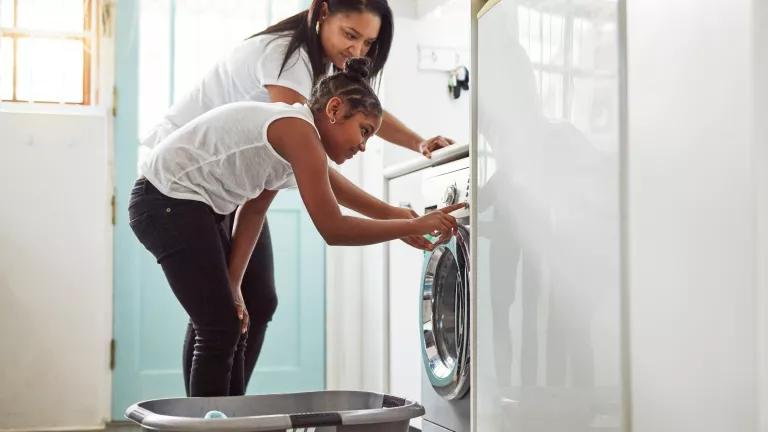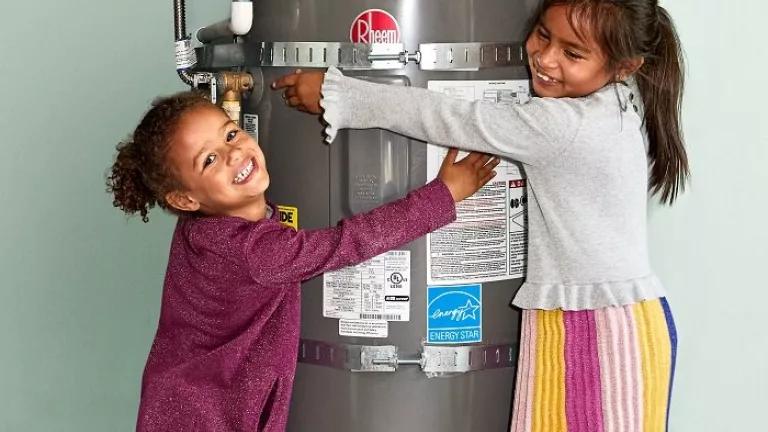Consider a Heat Pump for Your Next Clothes Dryer
In the market for a new clothes dryer? Consider a heat pump clothes dryer, a more efficient option than conventional models.

Lumi Nola/Getty Images
This blog was published as part of Energy Efficiency Day 2023
Purchasing energy efficient products isn’t just good for the environment—it helps you save money too! The biggest energy users in a home are appliances used for heating and cooling air, and water heating. All these needs can be served by highly efficient heat pumps, that is right—even cooling. When a heat pump runs in reverse, it can be used to cool the air inside instead of heating it. And with the incentives and rebates coming soon thanks to the Inflation Reduction Act, it’s time to start planning how to upgrade your home.
And believe it or not, heat pumps can serve yet another role in your home! Heat pump clothes dryers can dry your clothes and save you money while they do so.
What are heat pump clothes dryers, and how do they work?
Heat pumps move heat around. Because they’re moving heat, not creating it, they’re incredibly efficient. A heat pump clothes dryer takes heat from the surrounding air, uses it to heat up air inside the dryer, then blows that warm air across the clothes in the drum. The air picks up moisture from the clothes, then the air is cooled to condense and capture the water. (The water is either emptied through a connection to a drain or by manually emptying a reservoir after a load.) The air is heated up again to continue the process.
Many traditional clothes dryers heat air using either electric resistance or gas combustion, blow that hot, dry air into drum of the dryer, then vent that warm, moist air to the outside. The need for these vents makes installation more complicated and expensive, and the vents can let warm air into your home in the summer and cold air in the winter. Because heat pump clothes dryers cool the air to remove moisture, no vent is required.
Will heat pump clothes dryers save money?
Heat pump clothes dryers tend to have a higher purchase price than less efficient products, but they make up for that over the life of the product with lower energy consumption. According to ENERGY STAR, heat pump clothes dryers use about 30% less energy than conventional products. (In fact, this is likely an underestimate of heat pump clothes dryer efficiency—research by the Northwest Energy Efficiency Alliance found that ENERGY STAR-certified washer-dryer pairs with heat pump dryers used about one half the energy of other ENERGY STAR-certified pairs, and one third the energy of conventional products.)
Are there downsides?
Right now the upfront cost of a heat pump clothes dryer is more expensive than an entry-level conventional product, though comparable in price to a more premium one. While they do pay for themselves over time through lower utility bills, the upfront cost will be a barrier to some consumers. (Though rebate and incentive programs can help address this, with a forthcoming rebate of up to $840 for heat pump clothes dryers for consumers that meet certain income thresholds, thanks to the IRA). Prices will likely come down over time, through economies of scale as heat pump clothes dryers gain market share.
Cycle times are generally longer for heat pump clothes dryers, though this can vary substantially by model. Pairing it with an efficient washer (which removes more moisture from the clothes through the spin cycle) can significantly improve drying times.
Conclusion
While clothes dryers aren’t the biggest energy users in your home, they still consume substantial amounts of energy, and it’s always great to increase efficiency (and save money!) wherever you can. In yet another demonstration of the usefulness and efficiency of the technology, heat pumps are once again by far the most efficient option. So, the next time you’re in the market for a dryer—make it a heat pump!




